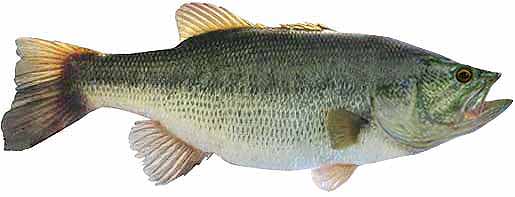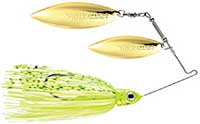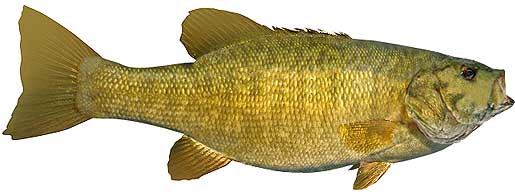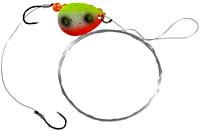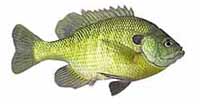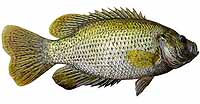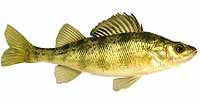Fishing Report For Glendale Lake, PA
By Rick Seaman
Last updated on .

Fishing Reports
Popular Fish Species Glendale Lake, PA
Largemouth Bass
Current Report: Good
Bass are being caught from one end of Glendale Lake to the other, in decent numbers.
FALL. Now that Fall is in full swing, bass here have moved shallow, following schools of baitfish into coves and shallow bays around 6 to 18 feet of water. Windy points in the Crooked Run and Beaver Valley arms are popular now. Currently topwater, jerkbaits, crankbaits, and slow-rolled spinnerbaits are catching most of the bass. Later in Fall, as deeper water cools, bait and bass move out to ledges, channel edges, points and humps where flutter spoons, jigs and drop shots are often good choices in 8 to 20 feet of water.
WINTER. Winter will isolate largemouth around slightly deeper structure, flats, points and creek channels. They can be found from 6 to 18 feet deep. Here they hold, feeding less frequently, awaiting warmer water to return in Spring. Slow presentations are key to getting bites. On warmer days, especially during late afternoons, bass may move into shallower water to feed.
SPRING. Once water temperatures rise into the low 60's, largemouth will move from deep wintering holes, to shallower water nearby spawning areas. Anglers report good topwater action from mid Spring through Summer, especially early in the morning, and on cloudy days. Vibrating jigs, jerkbaits and spinnerbaits typically get bites just away from the shoreline. At this time they are feeding aggressively in about 2 to 10 feet of water, and preparing for the spawn. Once water warms into the mid to high 60's, they will move into 2 to 5 feet of water, and create nests, then lay their eggs. Immediately afterwards, females move to deeper water and males remain to guard the eggs, and then the fry. After a couple weeks, the males also move to slightly deeper water, around 6 to 18 feet deep. Lipless crankbaits, vibrating jigs, plastic worms, jigs, worms, and swimbaits catch bass during this period.
SUMMER. Water temperatures will warm considerably in Summer. Bass will feed shallow, early and late in the day, where they will be caught in 6 to 25 feet of water, on square-bill crankbaits and spinnerbaits. In warmer weather, the concentration of brush in the back of Slate Lick Run, and the brush in Wyerough Run behind the Beaver Valley Road bridge, hold a lot of fish. The rip rap, and rocky shorelines along the east side of the lake are home to crawfish, and bass like to feed there. Many areas around the lake have submerged weeds, in 8' to 12 of water, which are often teeming with all kinds of bait and bass. Largemouth bass here feed on shad, herring, small sunfish and crawfish. During the hotter parts of the day, they are being caught on points, channel edges, and ledges 15 to 20 feet deep.
Smallmouth Bass
Current Report: Good To Very Good
Glendale Lake is a very good smallmouth bass fishery. The rocky and rip rap shorelines are ideal feeding areas as smallies here eat lots of crawfish. The submerged weed beds outside these rocky shores makes a great holding spot. These weeds are also home to snacks like alewives, bluegill, perch and golden shiners.
FALL. Fall is in full swing and smallmouth have followed schools of baitfish into coves and bays 6 to 18 feet deep. They thrive in the cold, clean water, which is an ideal environment for them. Locals report that tube jigs are a great choice when the bass are around 15 feet deep. Rocky shorelines and rip-rap and near McKees Run and around the dam are ideal smallie water now. Drop shot rigs with small worms or shad shaped plastics are also popular in 10' water or deeper. Jerkbaits, deep-diving crankbaits, and slow-rolled spinnerbaits, are also successful, when bass are shallow to mid depth. Later in Fall, smallies move to slightly deeper water, around 20 feet deep. Fishing shallow for smallmouth is often good on cold, windy, cloudy and rainy days.
WINTER. Winter will isolate them around deeper structure, points, flats and creek channels, often suspending in open water above these features. They can generally be found from 12 to 30 feet deep. Jigging spoons, tube baits, drop-shot worms, jigs and Ned rigs tend to temp smallmouth in deep water. I like to work these deeper haunts very slowly, as the bass are somewhat sluggish. Here they hold, feeding less frequently, awaiting warmer water to return in Spring.
SPRING. After ice out, when water temperatures rise into the 50's, smallmouth move from deep wintering spots to shallower water, just outside spawning areas. They feed heavily in 2 to 10 feet of water at this time, and are typically caught on jerkbaits, crankbaits, tube baits, Ned rigs, and crayfish imitating plastics. Once water warms into the high 50's, they move into shallower water, and create nests in gravel or sand areas, then lay their eggs. Females then move to deeper water and males remain to guard the eggs, and then the fry. After a couple weeks, the males also move into 15 to 20 feet deep, and feed aggressively. Deep-diving crankbaits, tube baits, Ned rigs, plastic worms, spoons and swimbaits are catching smallies during this period.
SUMMER. Smallmouth bass are currently feeding shallow early and late in the day in 8 to 12 feet of water. They are being caught on topwater, crankbaits, swimbaits, Ned rigs and tube baits. Smallmouth bass here feed on crawfish, gizzard shad, and small sunfish. They prefer rocky or gravel bottom areas, as this is where crayfish live. During the hotter parts of the day, they are being caught on points, humps, and ledges around 20 to 25 feet deep. Often these deeper fish tend to school, so finding them can deliver some fast action.
Walleye
Current Report: Poor To Good
Walleye like to slow cruise around flats and structure close to deep water. Around Epply Island, and several other areas where the river channel runs close to the bank, are a good place to find walleye. The better section of the lake, generally speaking, is from the Muskrat Beach to the Glendale Lake Dam.
FALL. Fall brought cooler temperatures to shallow water, drawing walleye and baitfish shallower. Walleye continue to be a major draw for anglers. Locals report catching nice walleye on long points, flats along the river and creek channels, and structure off shore. Jigs, swimbaits, spoons, crankbaits, jerkbaits, and spinnerbaits are all catching walleye this time of year. Early Fall finds them in 6 to 18 feet of water. Later in Fall, they move out slightly deeper. Dragging jigs, bottom bouncers, or worm harnesses with nightcrawlers or leeches, around ledge drop-offs is catching walleye fairly consistently. Watch for the bigger walleye to be slightly deeper than the majority of the school.
WINTER. This Winter, fishing for walleye has been pretty good, as it has been for the last few years. Before, during and after any ice, anglers report catching them in the main basin area, in 12 to 30 feet of water, along deep creek channel edges, rocky humps and ledges. Steep drops in the area toward the dam are also producing during these cold months. They primarily feed on small fish, staying close to the bottom. Blade baits, jigs, swimbaits, spoons, deep-diving crankbaits, and worm harness spinners, all work while deep trolling or drifting.
SPRING. Early Spring brings warming water in the shallows, and draws walleye here to feed, especially rocky areas and inlet channels. In Spring work points, drop offs, submerged structure, rock ledges, flats and flats adjacent to deeper water. Here, in 6 to 14 feet deep, they will spawn once the water warms to the mid to high 40's. When they move shallow, bright colored jigs, tipped with minnows or nightcrawlers typically catch them. Spinnerbaits, jerkbaits and crankbaits are also working when walleye are up shallow. Afterwards, they move to about 20 feet deep around points, flats, shoals and ledges, nearby shore, often staying in close proximity to their spawning locations.
SUMMER. Water temperatures rise in Summer, and walleye fishing is good if you can get your bait deep enough. Early in Summer, walleye tend to concentrate in 10 to 25 feet of water. Throughout Summer, early in the morning, and from dusk to long after dark are good times to catch walleye. At those times they move slightly shallower to feed in low-light conditions. Night fishing is often good in Summer, as well. The rest of the time they are cruising flats and creek channel edges, 15 to 25 feet deep , preferring the cooler temperatures. When the bite is slow, grubs and nightcrawlers, fished just off the bottom typically catch walleye.
Fishing Video
Fish species to fish for...
Guide to fishing for largemouth bass, smallmouth bass, channel catfish, black crappie, walleye, bluegill, rock bass, yellow perch, bowfin, chain pickerel, muskie and northern pike at Glendale Lake in Pennsylvania.
Fishing at Prince Gallitzin State Park
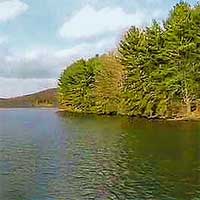 Glendale Lake is a 1,600-acre lake, with 26 miles of shoreline, in the central part of the state. Numerous access points allow for shoreline fishing. The lake has nice populations of bass, catfish, walleye, crappie, perch and sunfish. If you are looking for big fish, northern pike, chain pickerel and muskie also reside in these waters.
Glendale Lake is a 1,600-acre lake, with 26 miles of shoreline, in the central part of the state. Numerous access points allow for shoreline fishing. The lake has nice populations of bass, catfish, walleye, crappie, perch and sunfish. If you are looking for big fish, northern pike, chain pickerel and muskie also reside in these waters.
Primary fish species to catch
Click images for fishing tips and details about each species.
Today's Weather & Forecast
Marinas
Click here for marinas.
Public Boat Launch Ramps & Landings
Click here for boat ramps.
Fishing License
Click here for a Pennsylvania Fishing License.
Map - Fishing & Access
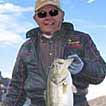 Rick Seaman is a fishing enthusiast with over five decades of fishing experience, a retired tournament fisherman, author of numerous published articles on fishing, and co-author of the book "Bass Fishing - It's not WHAT you throw, It's WHERE you throw it".
Rick Seaman is a fishing enthusiast with over five decades of fishing experience, a retired tournament fisherman, author of numerous published articles on fishing, and co-author of the book "Bass Fishing - It's not WHAT you throw, It's WHERE you throw it".
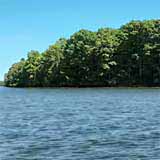 Contact Information
Contact Information
Prince Gallitzin State Park
966 Marina Road
Patton, PA 16668
814 674-1000
Fishing lakes in each state
110625
Glendale Lake, Pennsylvania Report
PENNSYLVANIA


Bass, crappie, muskie, pike and catfish fishing in central PA.


